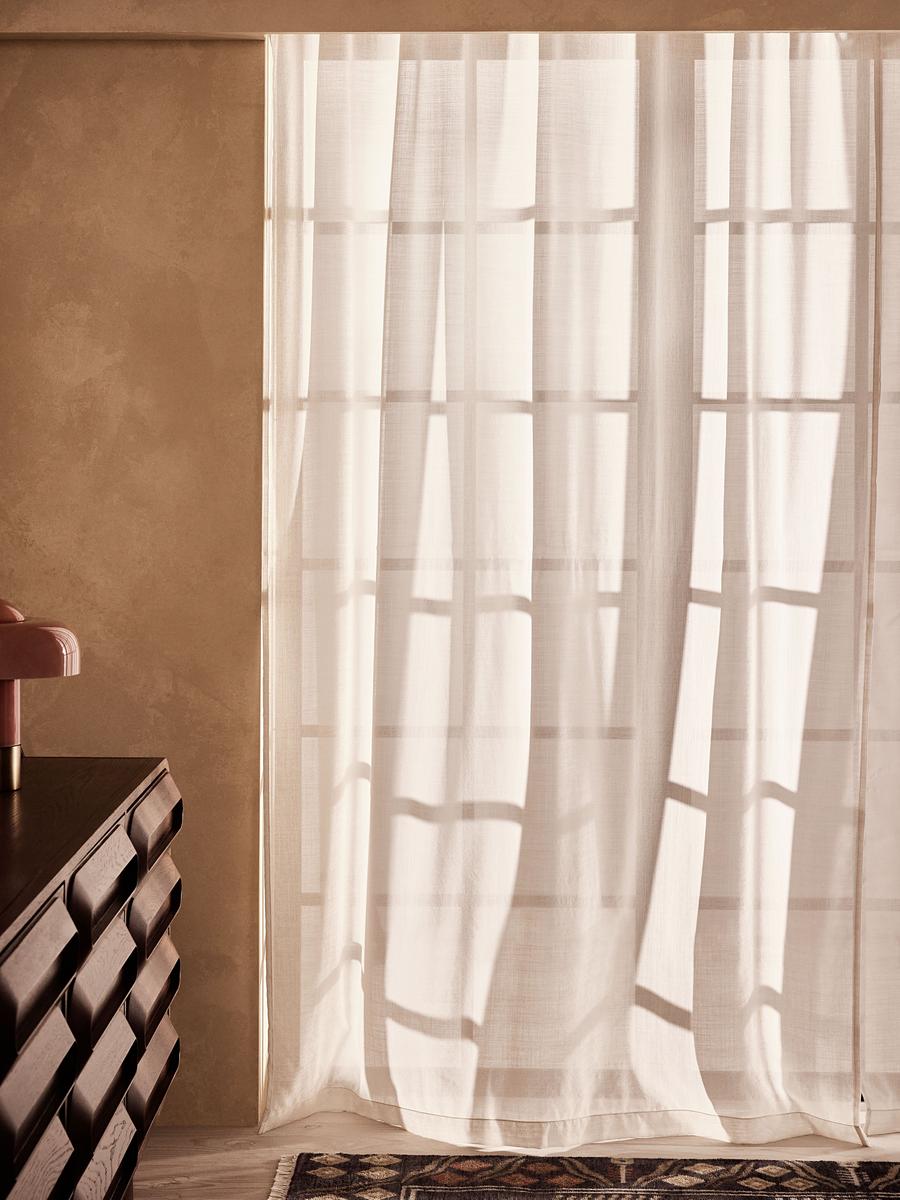How to Hang Curtains the Way an Interior Designer Would — To Balance, Blur Lines, and Bring Impact to a Room
Curtains do more than just frame your view; they’re a powerful decorative element in any space (if you know how to hang them well)

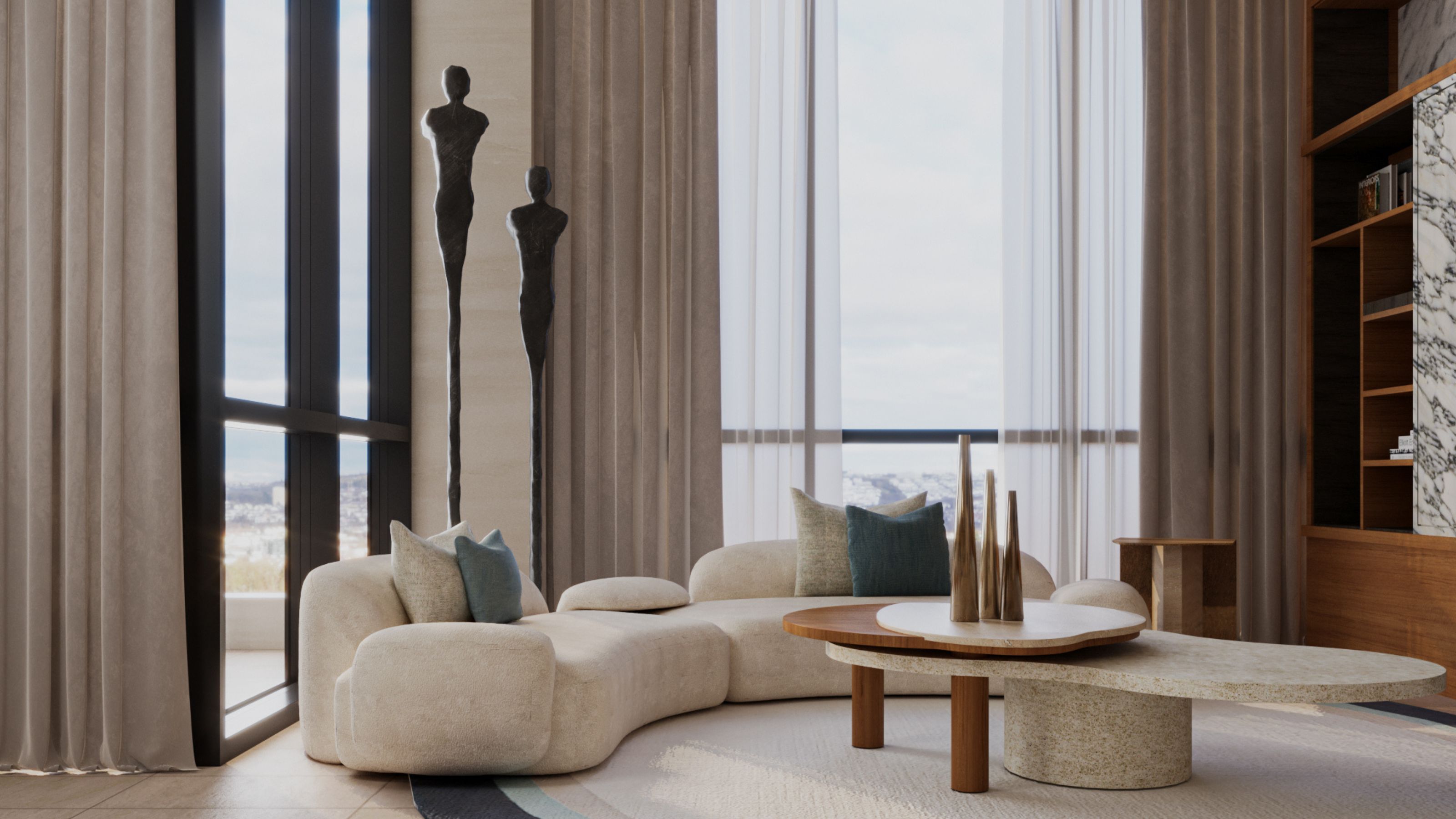
Interior designers know that curtains are so much more than just a finishing touch. The right window treatments have the power to make a room feel brighter, taller, or softer. They can provide privacy and flexibility, or add a pop of color and a layer of pattern that completely changes how a space looks.
This year, sculptural forms and color-drenching are just two of the top curtain trends on our radar. But it’s not just the look of the curtains that matters, it's the execution that sets an interior designer's approach apart — from building drapes into a room’s architecture to dedicating a whole wall to a curtain, it’s the how as much as the what that makes all the difference.
So, how do you hang curtains like an interior designer? And what lessons can be learned from their approach? What’s the best way to make them look super luxe and stylish? We asked the experts how to make curtains work in a contemporary home. Here's what they said to do.
1. Wrap the Walls

If you’re adding curtains to a wall with architectural quirks (a French door, say, or a gap between multiple windows), the instinct might be to have individual, separate solutions. However, Caroline Mills, head of interior design at Zulufish, disagrees with this approach.
“It can be tempting to try and disguise these gaps and irregularities, but incorporating them into the window dressing actually makes the whole composition feel much more generous,” she says. “Curtains serve as an architectural element in their own right, and their placement is, in my opinion, more important than the color or pattern.”
“In this project, we extended the curtain across the full length of the wall to allow the eye to travel without interruption,” she adds. This has the added benefit of looking smarter when the curtains are closed, too. “There’s a sense of enclosure when they’re shut, making the whole room feel softer and more cocooning without ever losing its sense of elegance,” explains Caroline.
2. Add a Wow-Factor Valance

In this London project, 2LG Studio transformed curtains into a design statement. “We wanted to draw the focus towards the windows and so made a wiggle-style valance to create the structure and form you see here,” Jordan Cluroe and Russell Whitehead, the studio’s founders, explain. “The result is perfectly sculptural. We now refer to valances as ‘skirtens’, or skirt curtains. They are super contemporary.”
The Livingetc newsletters are your inside source for what’s shaping interiors now - and what’s next. Discover trend forecasts, smart style ideas, and curated shopping inspiration that brings design to life. Subscribe today and stay ahead of the curve.
The wave-style modern pelmet idea is playfully echoed throughout the rest of the dressing room, proving that curtains look their best when they’re planned into a scheme rather than added in as an afterthought.
To create a luxurious look, the pair extended the curtains. “We transformed them into a wall-to-wall, floor-to-ceiling style,” they explain. “Making your curtains as wide and tall as possible helps to make the window appear larger and more luxurious.”
Known for their playful, contemporary approach to interior design, Jordan and Russell are a creative duo that love decorating with color. As well as their residential and commercial projects, they are design consultants and stylists.
3. Double Up Your Curtains
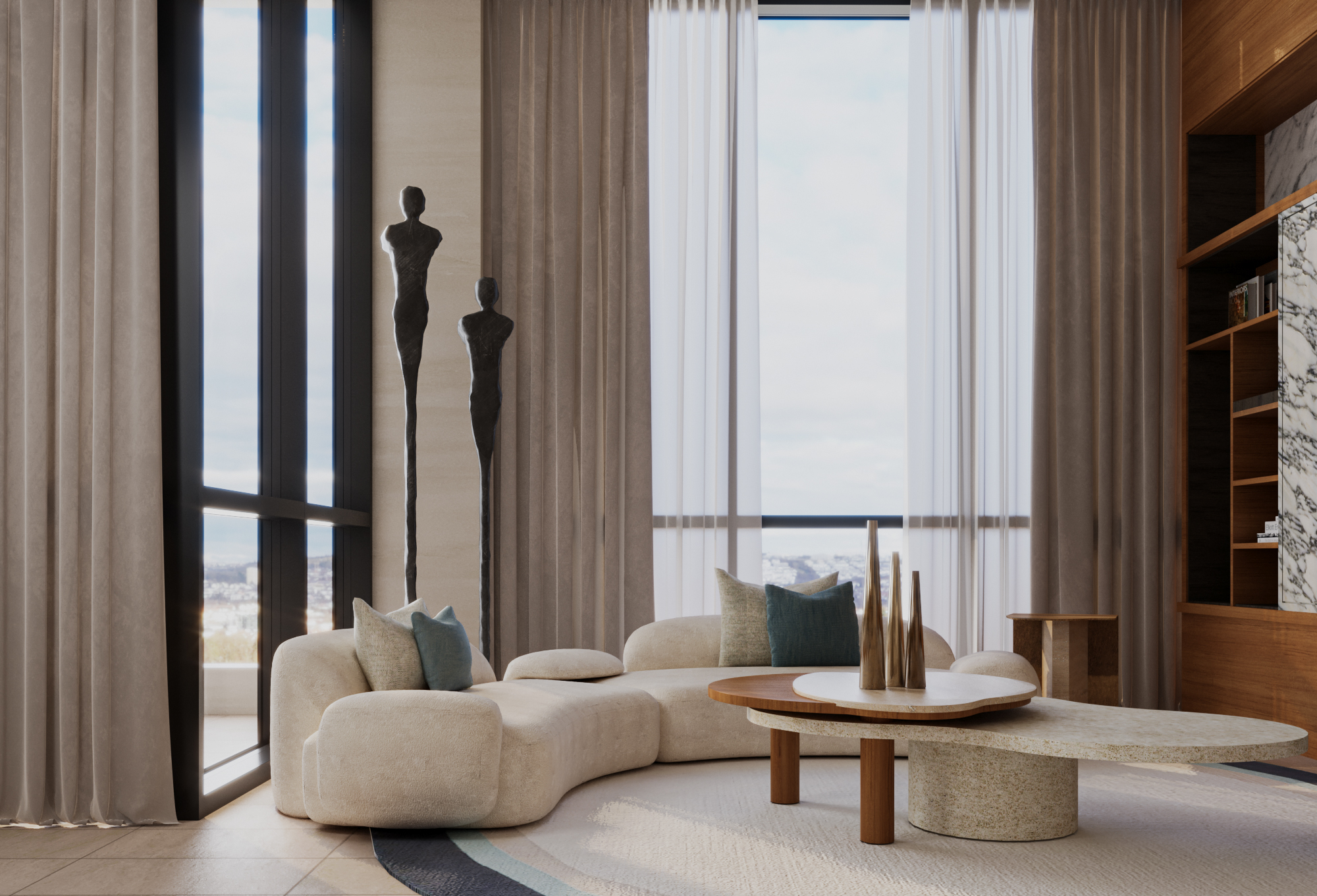
For practicality without any loss of luxury, many interior designers prefer to layer two types of curtains at the same window. In this living room, a sheer and solid fabric curtain has been combined to offer flexibility — there’s privacy, if needed, without any real loss of daylight.
“The sheer layer allows soft, diffused natural light during the day, maintaining a sense of openness and airiness even when fully closed,” explains interior designer, Mohamed Alqari from Qreative Design. “The solid fabric provides a richer, more elegant framing of the windows when they’re drawn. Layering the two types together creates depth, texture, and a far more luxurious look.”
“To avoid any sense of flatness, always select complementary textures for the two curtains,” Mohamed advises. “Ensure your hardware is strong and streamlined so that it can support both layers without looking or feeling bulky.”
4. Soften the Look
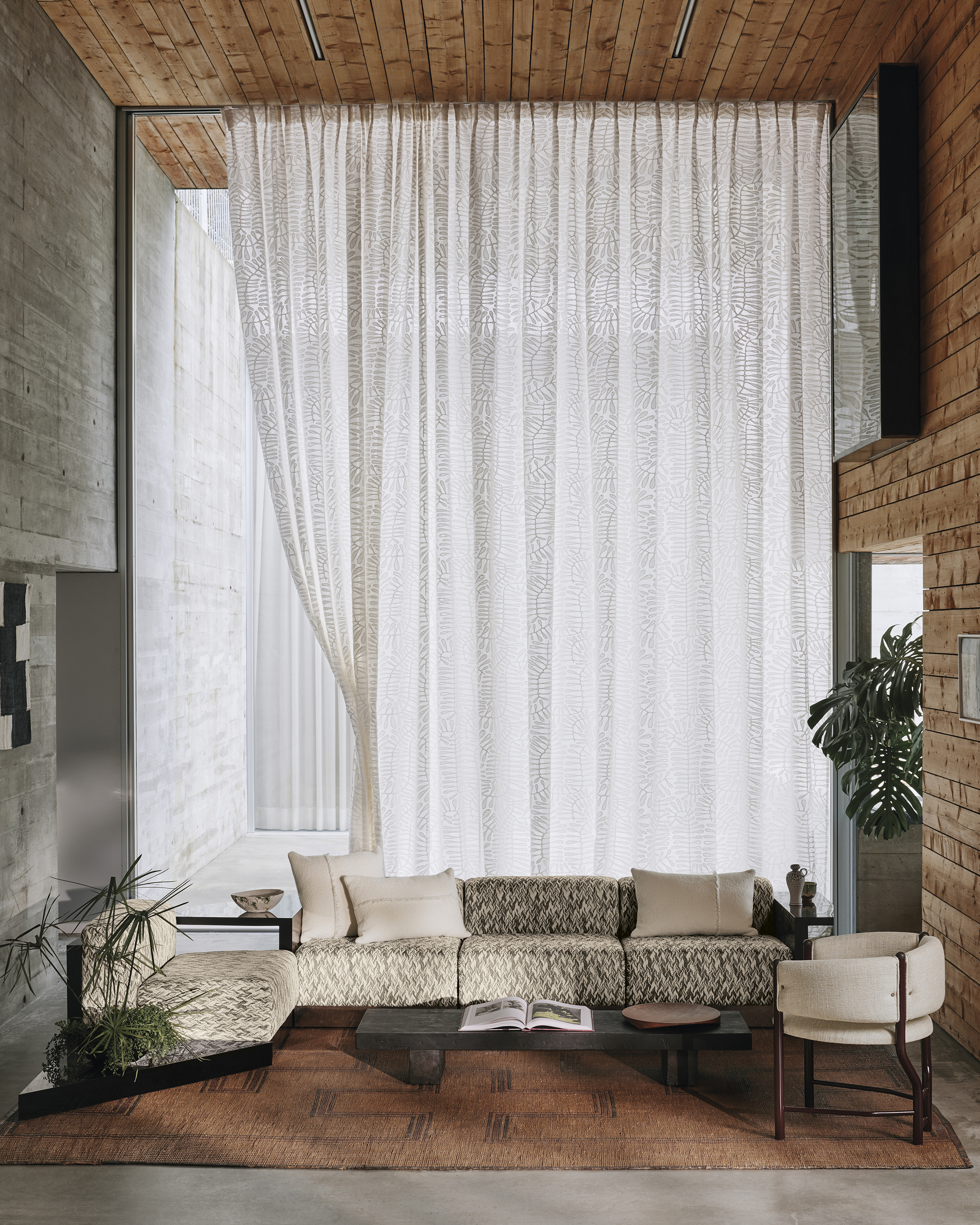
In more architectural spaces, curtains can be used to soften the overall look and feel of a room. A floor-to-ceiling sheer can have a delicate but no less impactful effect on a space. “They fall in a way that feels light and fluid, so they’re perfect for balancing sharper or more architectural spaces,” says Melissa Hutley, co-founder of Hutley & Humm. “They blur lines and have something of an ethereal quality.”
These are not the sheer curtains of old, however. “There’s a move away from just plain white sheers as we increasingly use them to add pattern, depth, and movement in a way that’s still understated,” adds Melissa.
“There are curtain fabric options from barely-there voiles to designs with fine embroidery, meaning they can be incredibly decorative,” she explains. “This makes them an excellent way to soften modern extensions, steel-framed windows, or rooms with a lot of hard surfaces.”
5. Introduce Print and Pattern

Curtains are the perfect place to experiment with more decorative motifs, but there’s a balance to maintain. “In this compact bedroom, the curtains were chosen to add whimsy, complementing the hues on the wall and ceiling rather than overpowering them,” says Carina Raymond, founder of Studio Raymond.
The interior designer opted for an embroidered fabric by Schumacher, which features a large repeat along the width of the fabric, ideal for curtains. The scale of the print also means the pattern reads clearly when the curtains are open as well as closed. “The scale means the matching valance is laid-back rather than too fussy,” adds Carina.
“When using a pattern, you need to make sure it works with every piece of your scheme. It is lovely to use the colors from the pattern and have them repeat in other parts of the room, like on pillow piping or a lampshade,” she suggests. (A concept we like to call 'pattern sprinkling'.)
6. Build Curtains Into the Room
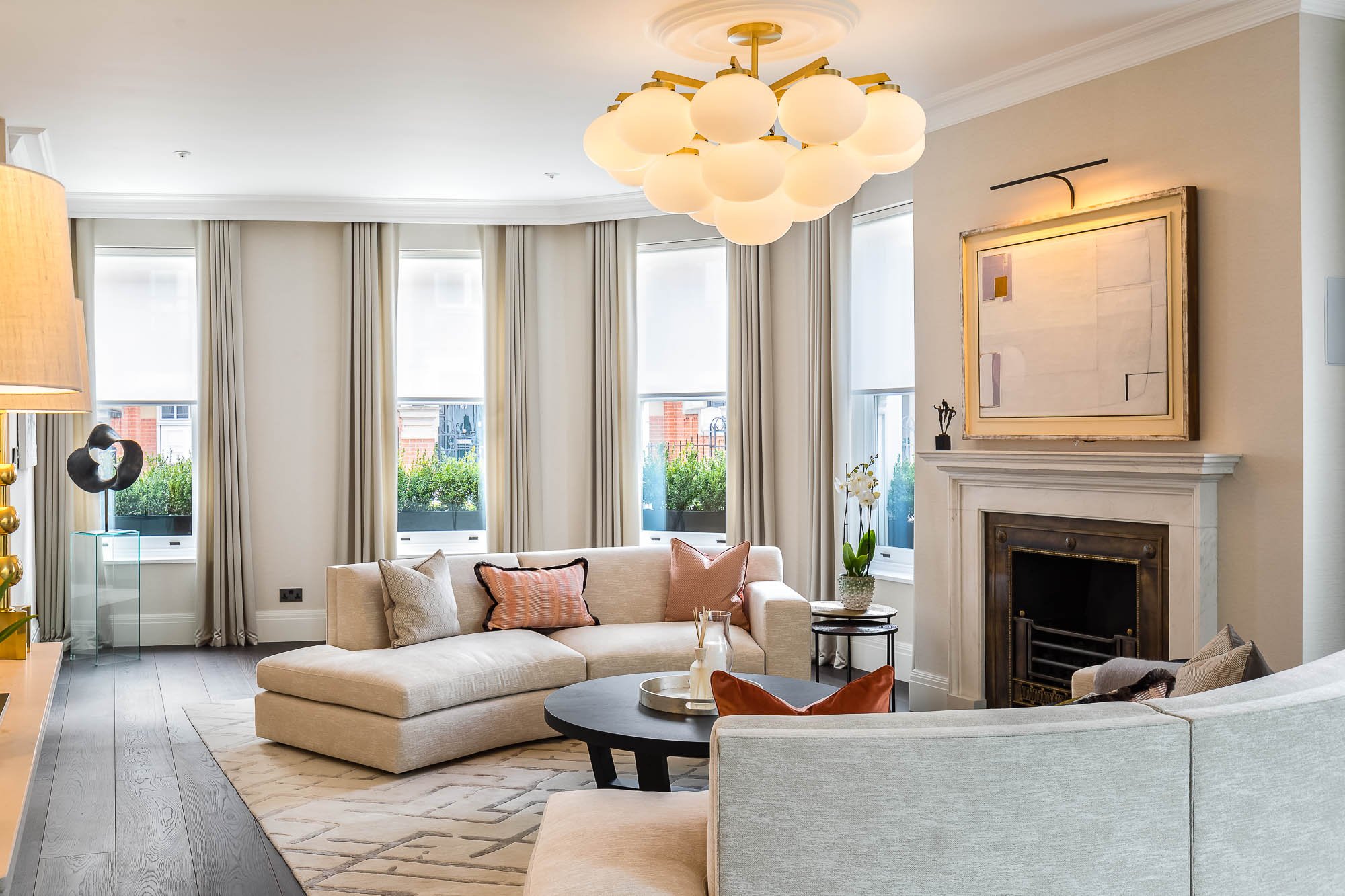
In contemporary spaces, many interior designers are swapping exposed curtain rods for ‘tucked-in’ solutions that hide the mechanics. This is a simple way to emphasize the height of a room and give the curtains themselves a more tailored look, although the process does require work to make window dressings look seamless.
“We like to bring the crown molding forward and conceal the track and any motorized elements behind it,” explains interior designer Juliette Byrne. “We always try different depths to find the one that will work in each space to give the room added architectural interest and a sense of glamor.”
“We always try to use a simple heading for curtains, like a double-pleat or a funnel heading, so the top of the curtain is completely hidden,” she suggests, noting how smart curtain ideas can elevate the look even more. “For a further touch of elegance, you can add a subtle LED strip light concealed behind the cornice. This will give your curtains a subtle glow at night and can enhance the look of their fabrics.”
Juliette is an award-winning interior designer known for blending classic principles with contemporary sensibilities. Based in Chelsea, she works across London and on residential projects around the world.
7. Go Beyond the Windows
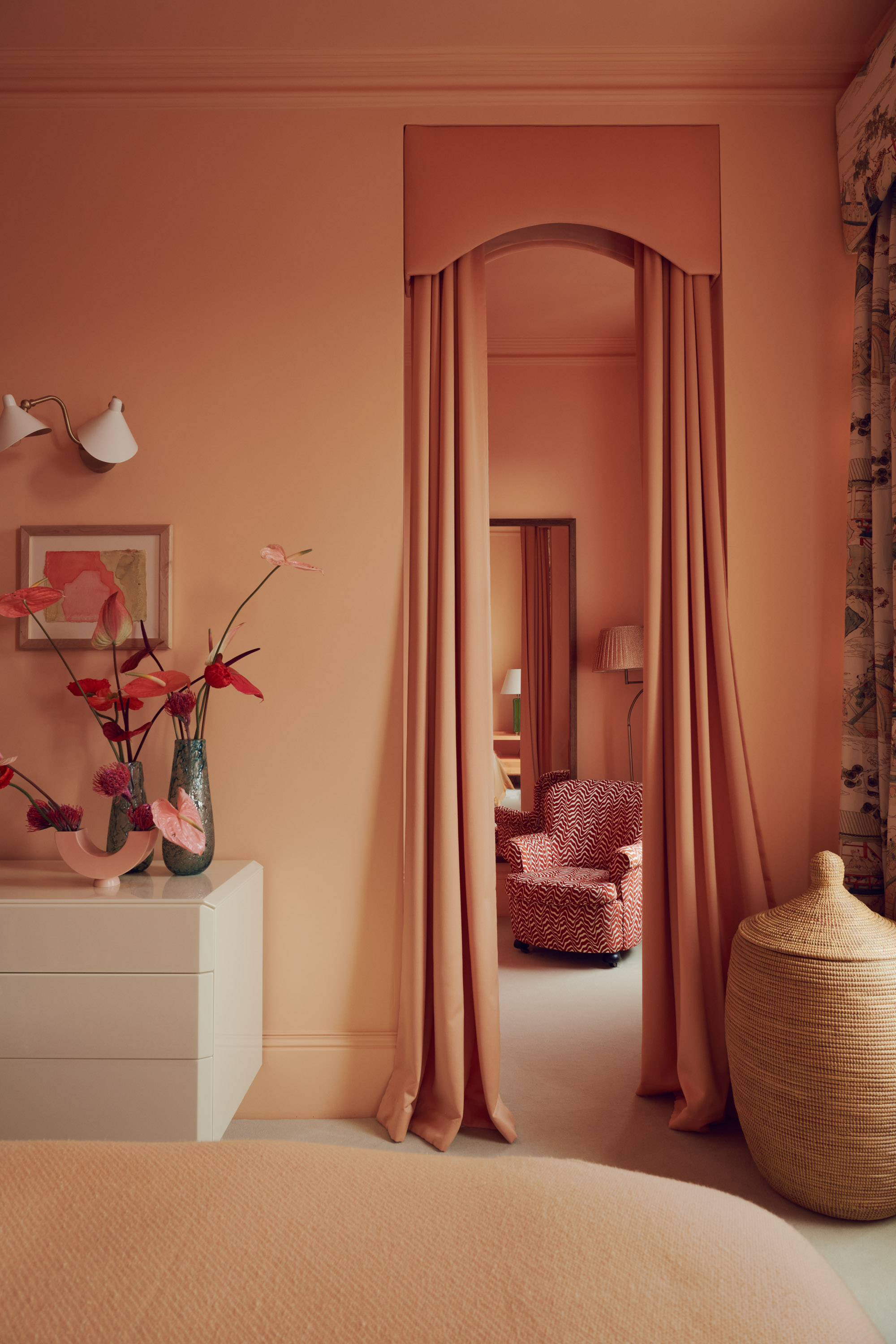
Increasingly, interior designers are using curtains away from windows as a way to blur the boundaries between different rooms. Internal doorway curtain ideas can be an effective way to divide open-plan spaces, too.
“For this project, we removed the standard door, raised the height of the opening, and played with the proportions to make it tall and slender, which gave it such elegance,” says Ellen Cumber, co-founder of interior design studio Golden. “As such, the valance is slightly taller than average, and we could pool the wool fabric on the floor to make the curtains extra chic and glamorous.”
“An internal curtain was perfect for this space because it’s a primary suite,” adds Ellen. “The room beyond is a dressing room, so here isn’t the same need for privacy, and the curtain has really become a beautifully soft sculptural feature in the bedroom.”
With so many different styles of curtains available, it’s great to take notes from interior designers who really know how to make the most of a window (and beyond). Whether you’re adding a flamboyant valance to your decorating moodboard or adding a floor-to-ceiling sheer, there’s never been a better time to let curtains take center stage.
In the market for a new style? We’ve hand-picked where to buy curtains and highlighted the best ones worth investing in now.
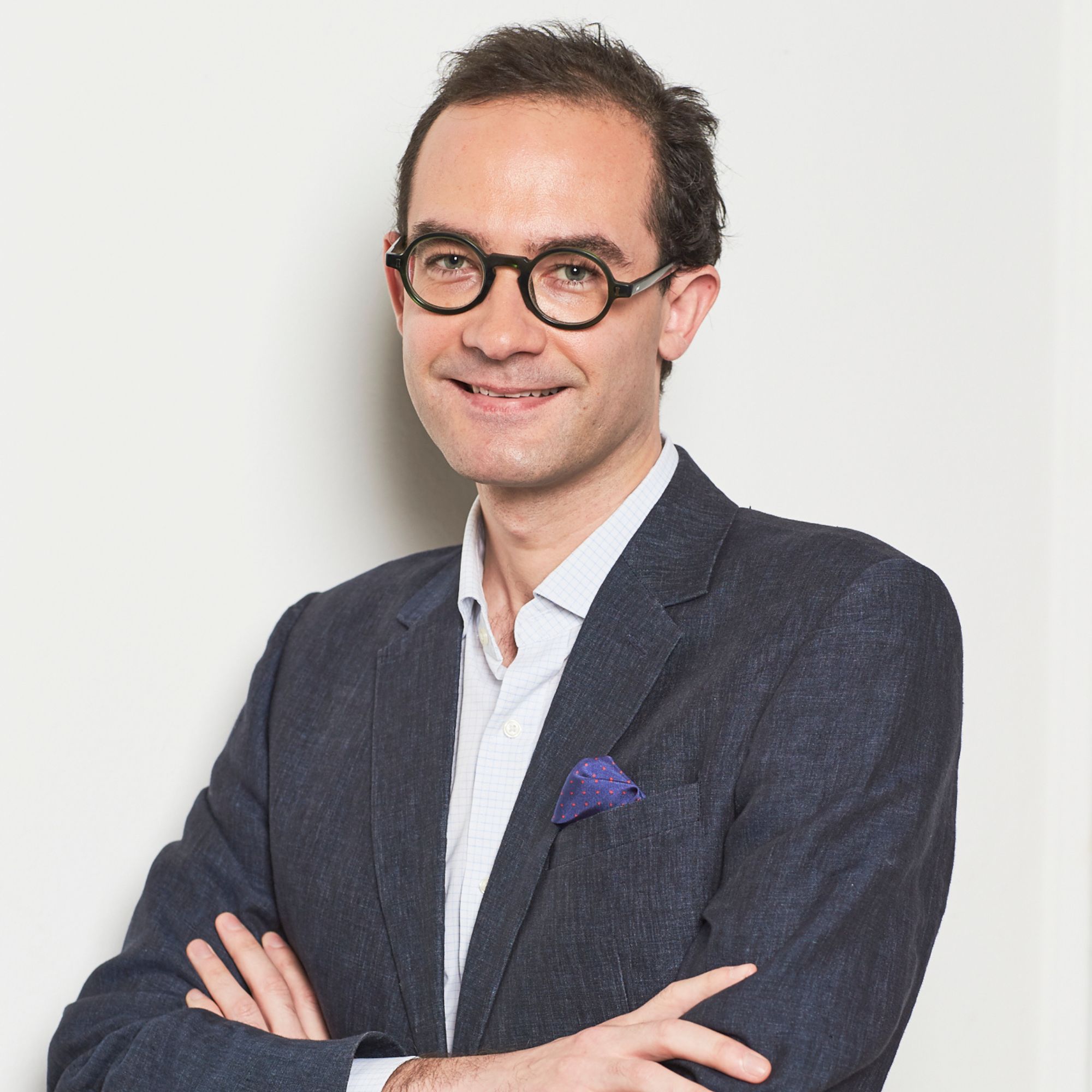
James Cunningham is a freelance journalist based in London. He has written extensively on design and decorating for some of the UK’s leading publications, including House Beautiful, ELLE Decoration, and Country Living, and previously served as Homes and Gardens Editor at Good Housekeeping. When he’s not at his desk, James can be found globetrotting in search of good food, better wine, and the best architecture.

